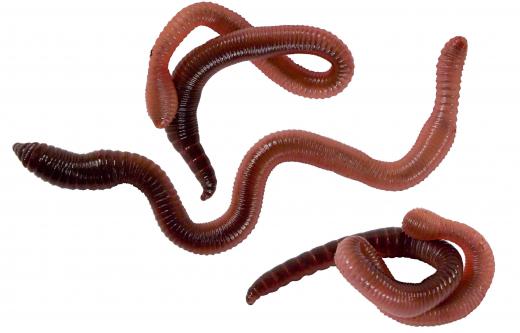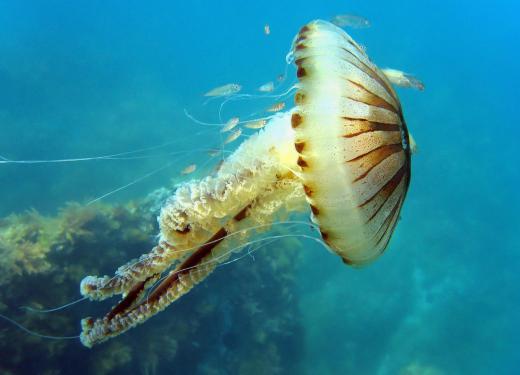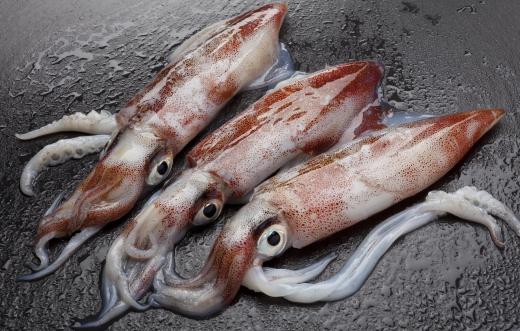How Many Animal Phyla are There?
 Michael Anissimov
Michael Anissimov
Under the most frequently used classification scheme, there are 38 animal phyla. Certain systematicists claim there are a different number of phyla, although always between 35 and 40. Only three phyla have been discovered in the last century, the most recent in 1993. No known phyla have ever gone completely extinct: at least some of their representatives always survive major extinctions.
Most modern animal phyla show up in the fossil record during or shortly after the Cambrian explosion, an episode of adaptive radiation 630-620 million years ago. There remains disagreement as to how many of these phyla existed prior to the Cambrian explosion, during the Ediacaran period, though most scientists agree that at least eight were already established.

The vast majority of animals belong to just nine phyla: Mollusca, Porifera, Cnidaria, Platyhelminthes, Nematoda, Annelida, Arthropoda, Echinodermata, and Chordata. In informal terms, these are the molluscs (112,000 species), sponges (5,000 species), cnidarians (jellyfish and friends: 11,000), flat worms (25,000), nematodes (80,000 - 1 million), annelids (segmented worms: 15,300), arthropods (1,134,000+, may be as many as 8 million), echinoderms (starfish and friends: 7,000), and chordates (vertebrates and lancelets: 100,000+).

Every phylum is monophyletic, meaning it includes all the descendants of a single species, and no species that are not descendants of that so-called stem taxa. This can be confirmed through genetic analysis. Among the phyla, the most diverse groups are the insects (over a million species, probably much more), and the mites (an arachnid with 45,000 described species, but may be as many as 1 million), both arthropods.

All the remaining phyla have fewer than about 2,000 members, the rarest phyla with just three (Cycliophora: odd sacs represented by Symbion pandora), two (Xenoturbellida: strange flatworm) or one species (Micrognathozoa: tiny jawed animal, and Placozoa, an animal that resembles a multicellular amoeba). Most are simple marine organisms, often referred to as worms or nanoplankton. Among the most interesting are the rotifers (Rotifera, small ciliated organisms), tardigrades (Tardigrada, water bears, the hardiest of all animals), dicyemids (Rhombozoa, lozenge-shaped squid parasites), gastrotrichs (Gastrotricha, tiny tube-like animals), acoels (Acoelomorpha, very small worms lacking a gut, basal to all bilaterians), and moss animals (Bryozoans, superficially similar to coral).
AS FEATURED ON:
AS FEATURED ON:














Discussion Comments
@Fa5t3r - It might even be possible that we could still discover some unknown phyla group in the future. But it would likely be microscopic and have limited numbers.
Unless, of course, we eventually discover life on other planets. I'm not sure how they would even deal with xenobiology in the current classification system though. It probably wouldn't be classified as "animal" even if it have the attributes we associate with animals, because what we call animals would be more closely related to plants than to alien species.
@umbra21 - A phyla is an enormous group, usually with quite a lot of diversity in it, even if it doesn't seem like it to the unlearned eye.
I believe most of them have creatures that are adapted to a wide range of niches, some of which wouldn't be disrupted by an extinction event that would disturb others.
And in the case of extinction events, it leaves a huge open field for species to change again, to spread out and retake abandoned niches.
However, when you contemplate the very minor phyla that only have a few species in them, it's probably entirely probable that there have been some major dead ends there. To get to the point where they are a phyla in the first place would take a lot of time and evolution though.
I find it hard to believe that there are no animal phyla that have gone extinct. I think it's much more likely that we just haven't discovered them yet, or didn't know them when we did see them in the fossil record.
There have been half a dozen major extinction events that we know of in which 90% or more of the Earth's species was wiped out. It just doesn't seem likely that every time, every phyla managed to keep going.
It's got to be more likely that we only count the ones that we know.
Post your comments